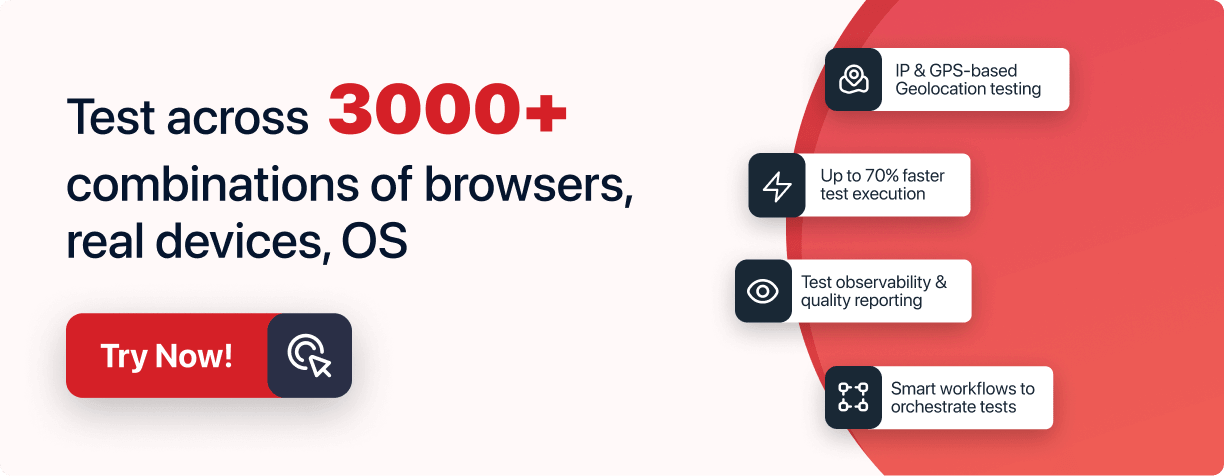System Integration Testing: A Comprehensive Guide With Examples And Best Practices
- Learning Hub
- System Integration Testing: A Comprehensive Guide With Examples And Best Practices
CHAPTERS
- Overview
- What is System integration testing
- Why perform System integration testing
- Real-World Scenario of System integration testing
- Advantages of System integration testing
- Disadvantages of System integration testing
- Prerequisites of System integration testing
- Process for System integration testing
- System integration testing vs. System testing
- Entry and Exit Criteria for Integration testing
- System integration testing techniques
- Who Performs System integration testing
- Skill set required for System integration testing profile
- Integration testing tools for writing tests
- Best practices of System integration testing
- Frequently Asked Questions (FAQs)
OVERVIEW
System integration testing (SIT) verifies that the different systems or components of a system work together as intended. In addition to testing the individual components or systems, integration testing tests how the components or systems interact with one another.
The goal of SIT is to ensure that all systems or components of a system work correctly when they are integrated and used together. Testing may include interfaces between different systems and end-to-end system functionality.
System integration testing involves assembling different system components logically and cost-effectively while thoroughly testing the execution of the system.
What is System integration testing?
System integration testing, or SIT, is a comprehensive way to test software applications, including the complete system. The system is composed of smaller units of software and hardware. It ensures that the functional and hardware aspects of the software are in complete synchronization.
With this type of testing, the individual modules or components are first tested separately and then tested again once it is combined into a single system.
The following testing types are performed once the development requirements are finalized.
- Unit testing
- System integration testing
- System testing
- Unit acceptance testing
Unit testing provides you a way to test a unit – the smallest piece of code that can be a function, a method, or even a property. The modern versions of unit testing can be found in popular frameworks such as JUnit or even automated testing tools like LambdaTest.
System testing helps you to validate the complete software product. It falls under the category of black box testing, which is all about the external functionalities of the software from the user’s perspective.
The end-user or client can perform unit acceptance testing to verify the software product or system before it is moved to the production environment. UAT is completed at the final stages once the functional, integration, and system testing are completed.
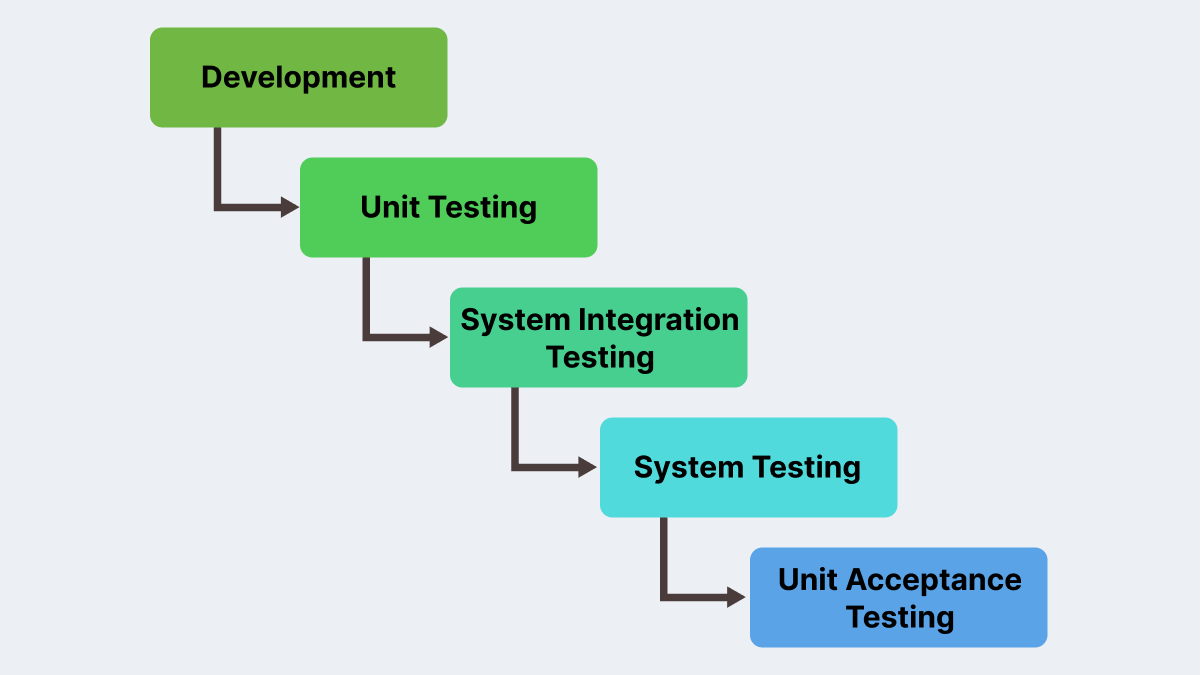
Why perform System integration testing?
Now that we have understood the basics of system integration testing, let us elaborate on some factors that highlight why system integration testing is crucial for your product’s success and quality:
- It ensures the software system tends to work seamlessly with other systems.
- The required interactions and associations tend to work perfectly.
- The required deliverables are moved to acceptance testing once the system integration testing is thoroughly validated.
- Make sure that the system assembled for the first time is complete.
The system contains numerous components that can be unit tested independently. As a result, system integration testing helps you to expose and correct errors before the system is handed over to the end users.
The problems or issues are discovered early, so a significant amount of time and effort can be saved as you do not have to fix those issues at the later development stages. The minimum viable product (MVP) is released only when the system integration testing is validated and passed.
Real-World Scenario of System integration testing
Let us understand system integration testing using a real-world scenario. Assume that a product-based organization uses software to manage different customer details, storing customer information in dedicated databases.
This software contains different screens in the UI – Login, Registration, and Manage Customer Information with dedicated database support for all of these functionalities. This will be used by customers, and they are pleased when all three functionalities work fine.
However, in a few years, the organization discovered that the software was not providing the required end-user experience and meeting the customer requirements. Some enhancements were proposed to make the software perform better in the long run.
Hence, they develop a feedback module and a database. This system now has a feedback module and database that needs to be integrated with the existing software. The testing is done on the whole system after the integration and is called system integration testing. The complete system integration testing ensures that all the required systems work according to the defined functionality.
Advantages of System integration testing
Now, let’s see some of the benefits of system integration testing.
- It helps you identify defects at an early stage. The defects found are set back to the development teams for fixing. This means that you can deliver high-quality software solutions and save considerable development efforts in the long run.
- SIT helps get early feedback or opinion on the acceptability of a module in the system.
- The faults can be exposed when the integrated components interact.
Disadvantages of System integration testing
Let us understand some of the disadvantages of system integration testing, which you should be aware of:
- It takes time to unit test all the modules in a system separately. It is possible that subsystems can fail even if they are tested individually since many issues arise when they interact with one another.
- The testing process is not finished once all the modules covering the top and bottom levels are included and tested.
We discussed the pros and cons of system integration testing, but it all comes down to your experience and expertise in handling different testing types that apply to your product.
Prerequisites of System integration testing
These are some prerequisites that can help you build a great system integration test plan.
- Creation of a test environment that matches the required specifications for your production environment.
- Identify the scenarios you need to test.
- Establish a proper communication plan.
- Establish a shared repository.
- Involve all the required stakeholders.
Organizations need to build a plan or test strategy around system integration testing. That is why you will see more organizations investing a lot of time and effort in reinventing their testing strategies and how they operate.
Process for System integration testing
The most common method for performing system integration testing is using the Data-Driven approach, where you are not required to rely much on the software testing tools
In this method, the data export and import occur between the system modules, and then the performance of each data field within the individual layer is monitored.
The following are the three main states of data flow:
- Data State when flowing within the Integration Layer.
- Data State when flowing within the Database Layer.
- State when flowing within the Application Layer.
Let us understand each of these flows in more detail so you can have more clarity.
Data State when flowing within the Integration Layer
The integration layer acts as a medium or interface between the data import and export. You must have basic knowledge of certain schema technologies for performing SIT at this layer.
Follow the steps below to validate the data exchange:
- Authenticate the data properties within this layer as per the defined requirements.
- Validate the web service request.
- Run the required unit tests to verify the data mappings and requests.
- Review the logs.
Data State when flowing within the Database Layer
You must have a basic knowledge of SQL to perform the SIT at this layer.
Follow the below-mentioned steps to validate the data exchange:
- Check that all data has been reached and committed from the previous level.
- Authentication of the table and column properties as per the defined requirements.
- Verify that the data validation rules and constraints are applied to the database.
- Check the stored procedures for data processing.
- Review the logs.
Data State when flowing within the Application Layer
You must follow the steps below to validate the data exchange:
- Check the visibility of the fields in the user interface
- Execute the required test cases to confirm the data requirements.
System integration testing vs. System testing
Let us compare the two testing types based on different factors:
| System integration testing | System testing |
|---|---|
| It ensures individual modules interact when integrated into a complete system. | It checks if the entire system is working per its requirements. |
| It is conducted after unit testing and is performed when a new module is introduced or added to the system. | It is conducted at the final stages, which means after the completion of the integration testing, and just before the user acceptance testing. |
| This is categorized as low-level testing. | It is categorized as high-level testing. |
| This testing addresses the interface requirements between different system components. | This testing focuses on validating different test cases based on the system requirements. |
Entry and Exit Criteria for Integration testing
Typically, integration testing involves the ETVX method (Entry Criteria, Task, Validation, Exit Criteria). Let us understand the entry and exit criteria related to system integration testing.
- Entry criteria: On the completion of unit testing.
- Inputs: Software requirements data, software design, verification plan, and integration documents.
- Activities: Creation of test cases, develop a test strategy, plan, and execution of all the tests on the target system.
- Exit criteria: Successful completion of system integration and required performance of the software.
System integration testing techniques
It is essential to perform comprehensive system integration testing of apps and websites to deliver the right business value to the end users and customers.
Here are the four different techniques that you can follow for performing System Integration Testing:
- Top-Down Approach
- Bottom-Up Approach
- Sandwich Approach
- Big Bang Approach.
Let us understand each of these approaches in more detail so that you can choose the technique that works best for you and your teams.
Top-Down Approach
Under this approach, the testing starts with just the topmost module or component of an application. The functionality of the underlying modules is performed using stubs. Once each test is complete, the real module replaces the stub. The modules can be integrated either in a breadth-first or depth-first manner. Testing will continue until the application is complete.
The major challenge in this approach is the direct dependency on the availability of lower-level module functionality. There are delays once stubs replace the real modules, and also, writing stubs could be a challenging proposition when you are working in this approach.
Bottom-Up Approach
This approach helps eliminate the limitations and challenges encountered in the top-down approach. In this method, the lowest-level modules are assembled to create clusters. These clusters serve as a sub-function of the application. Then a driver is created to manage the input and output details related to the test case.
After this, you can perform testing of the cluster. Once the cluster is tested, you can remove the driver, and the cluster is combined with the next upper level. This process continues until we have traversed the entire application structure.
There is no need for stubs in this approach. It is a more simplified approach as the processing moves upward and the need for drivers gets reduced. This approach works well for object-oriented systems, real-time systems, and systems that follow performance standards. The only limitation of this approach is the UI testing , which is done at last.
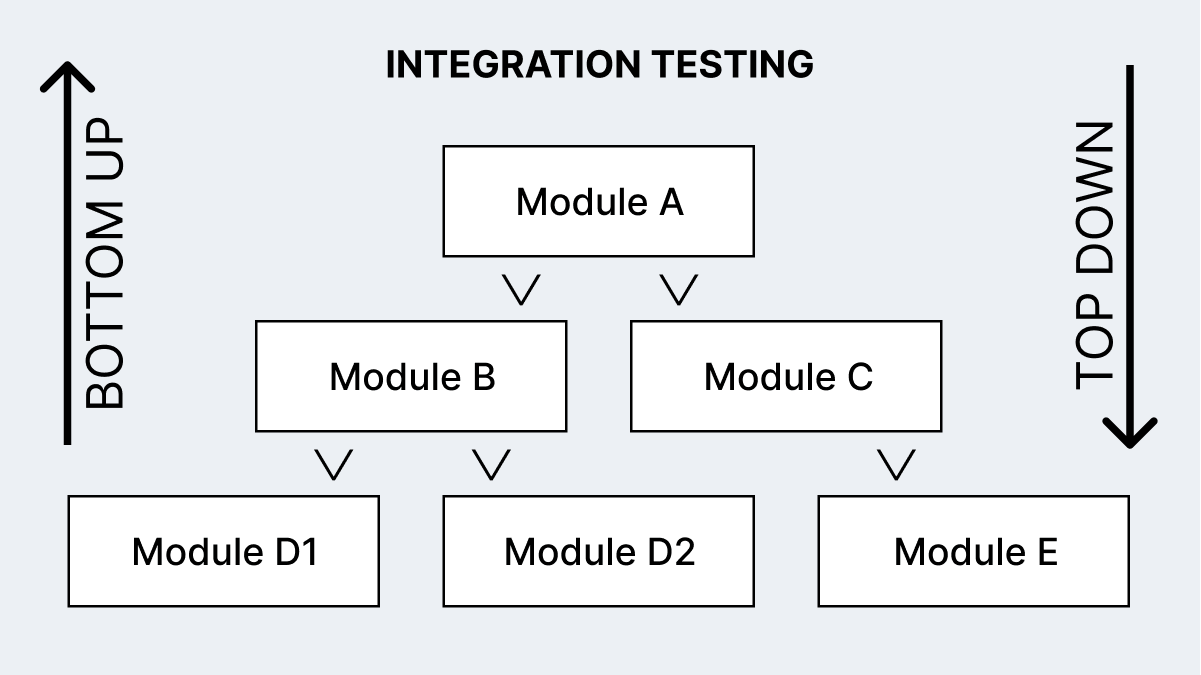
Sandwich Approach
The top-down and bottom-up approaches discussed in the previous sections are used in combination here. The system is categorized into three different layers – the middle layer is the target layer, one layer is above the target, and there is another layer below the target.
Testing is performed in both directions and is grouped in the middle layer. The top and bottom layers can be tested in parallel. However, there is also a limitation where you can thoroughly test the individual subsystems before integration.
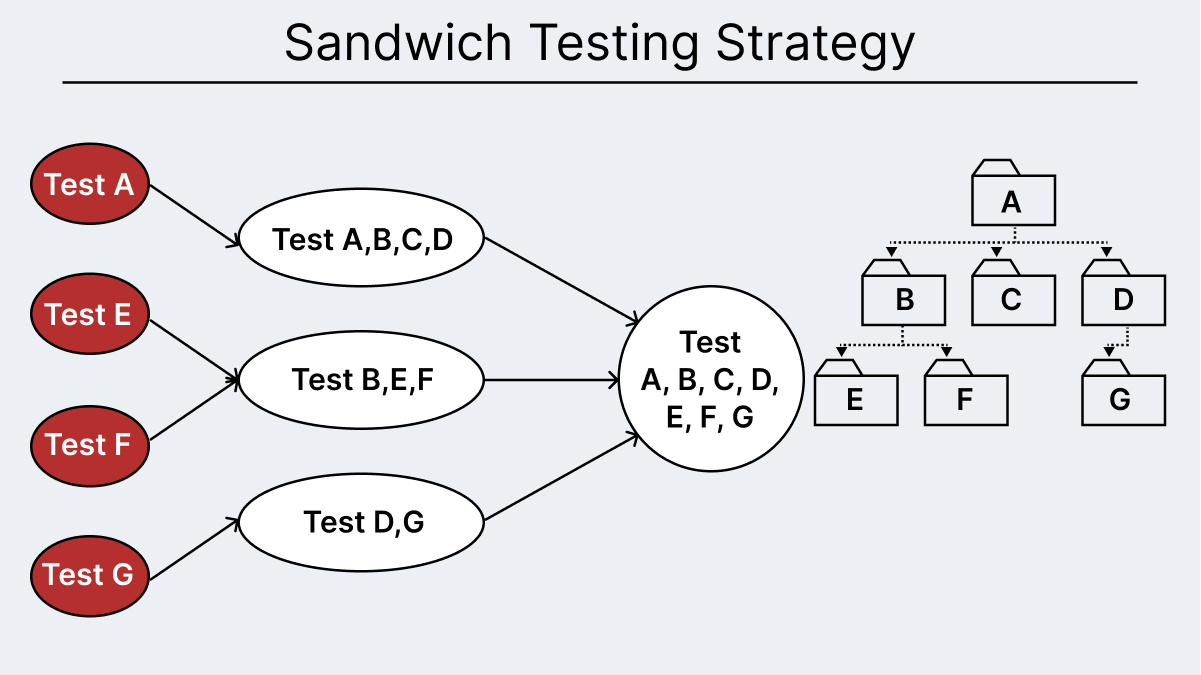
To overcome this limitation, we have modified sandwich testing so that you can test the top, middle, and bottom layers in parallel using stubs and drivers.
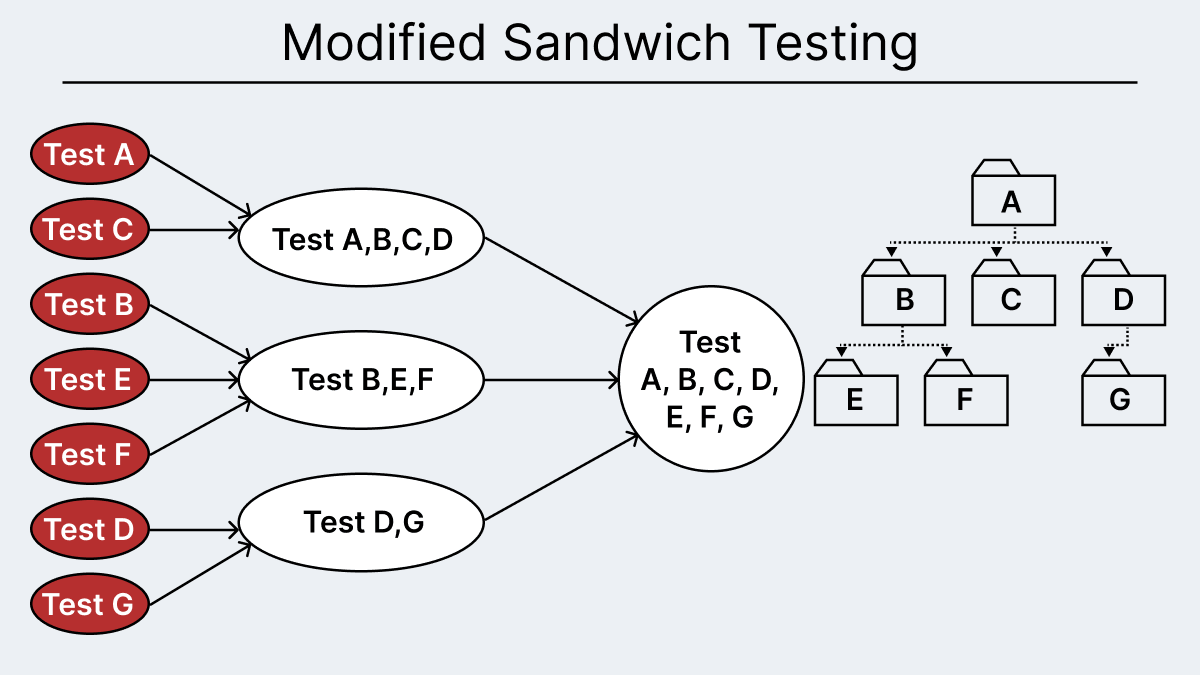
Big Bang Approach
In this approach, integration is done to make sure that the required modules related to the application are ready. Once the integration is completed, then you can perform testing to check if the integrated systems are working or not.
It can be challenging to analyze the root cause with this approach when all the systems are closely integrated. This approach is useful when you are required to perform one round of system integration testing.
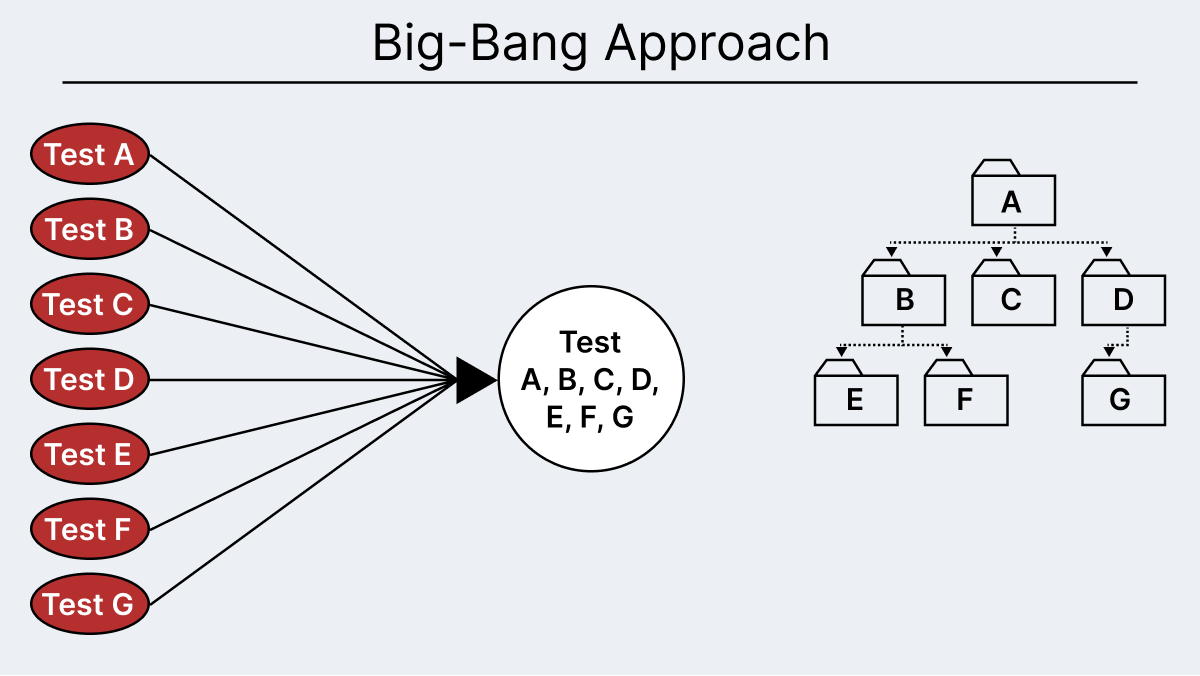
Who Performs System integration testing?
System integration testing is all about collaboration between different teams. We have dedicated QA teams performing system integration testing of apps and websites because they know the overall functionality updates and upgrade changes.
The developers can validate the code requirements to observe the exact system behavior. Once the development team gives the go-ahead, the QA team can perform the different testing levels based on the diverse testing requirements.
Testers can often collaborate closely with product owners or business analysts to help develop high-level test scenarios or review end-to-end test cases. This approach is useful as the product owners are closer to the users and thoroughly understand their approach in the long run.
It is better to consult the developers to ensure that the technically complicated workflows are thoroughly tested. Any team member can develop and execute end to end testing in the Agile and DevOps environments. Developers can perform peer reviews of the coding requirements. In continuous integration, testers can determine the test scenarios, developers perform the coding of the automated scripts and release engineers ensure that the tests are implemented into the continuous integration pipeline where all the team members review the results.
Since knowing who is responsible for system integration testing is important, it is worth considering the testing practices that change with time. Organizations rely more on quality engineering than quality assurance; the entire team plays a vital role in software quality. It becomes a collective effort so that you deliver exceptional outcomes to the customers in the long run.
Note:The system integration testing can also depend on the organization's goals and objectives.
Skill set required for System integration testing profile.
Organizations are always looking to hire great system integration test specialists for managing complex testing requirements. The professionals can either work in a big team of testers or as individual contributors based on the project requirements. It is always great to have professionals who have previously encountered and handled testing challenges.
Some key skills required for this profile include:
- Configuring test environments that include data integration platforms.
- Monitor and test different systems and components.
- Curious to learn and implement different real-world concepts.
- Ability to implement and execute test suites.
- Experience with any programming language such as Python, Java, etc.
- Strong technical and communication skills for effective stakeholder management.
Integration testing tools for writing tests
Integration testing tools are used to test the interface between modules and find the bugs; these bugs may happen because of the multiple modules integration. The main objective of these tools is to make sure that the specific modules are working as per the customer’s needs.
Following are the test tools to create integration test suites.
- VectorCAST/C++: Vector Software VectorCAST tool is a popular choice for performing both the unit and integration testing requirements. Each module or component is tested independently to ensure the individual components are working fine without any dependencies.
During the integration testing, the components are combined and verified to ensure that all the integrated modules work as a potent combination. This test solution is widely used in financial industries, medical devices, and railways.
- Citrus: Citrus is a widely used test framework written in Java. It helps in automated integration testing of message-based applications and data formats. The validation of JSON, XML and plain text messaging requests and responses can be performed. In this case, Citrus works on both the client and server-side and helps to simulate the request and response messages.
- Smart Integration Test Accelerator (SITA): Organizations around the globe are now moving to business-oriented architecture. The traditional integration testing approach requires considerable effort when creating test data.
Wipro’s SITA helps you to overcome such limitations. This tool helps accelerate the generation of test data and test design. This is a cost-effective approach as you can reuse test data and test cases.
You can choose the required tooling options available in the market based on different factors that include:
- Project requirements
- Ease of use
- Cost of the license
- Language support
So far, we have discussed different concepts that make system integration testing an essential part of any testing ecosystem. The true potential of system integration testing can only be leveraged when performed on scalable cloud testing platforms like LambdaTest, which simplify your testing requirements as you grow.
When building your iterative product requirements, it is important to validate and test them quickly before they are handed over to the customers for feedback and input. You cannot rely on traditional working methods, where it takes a lot of time to release the final product in the market. With LambdaTest's continuous quality cloud, you can test and ship your software products at a lighter pace. It offers manual and automated testing across 3000+ real browsers, devices, and operating systems combinations.
LambdaTest offers automated browser testing and automated app testing using different automated testing tools like Selenium, Cypress, Playwright, Appium, Espresso, XCUITest, and more.
You can subscribe to the LambdaTest YouTube Channel and stay updated with the latest software testing tutorials around Selenium testing, Playwright testing, Appium automation, and more.
Best practices of System integration testing
System integration is a continuous process where you tend to perform the testing whenever new systems are integrated. You can follow some best practices to ensure that your system integration testing delivers the required outcomes:
- It is recommended to maintain all the test assets, such as test scripts and test results, in a centralized location so that all the teams can easily access them.
- Finalize all the required testing environments for your testing.
- Monitor the testing results and metrics so that you can make the required changes or improvements in the long run. It helps to redefine or reinvent your testing strategies and processes.
Wrapping up
In this system integration testing guide, we discussed the different features and capabilities that system integration testing offers. Testing is an integral part of validating the performance of any website before end customers use it. That is why it is essential to thoroughly validate all the required components once they are completely integrated into a system. You can discover the actual value and performance at the component level and evaluate the performance metrics related to the entire system.
LambdaTest has transformed the way organizations reinvent and evolve their testing strategies. That is why cross browser testing is commonly adopted by different leading organizations going forward.
If you are a growing startup looking to redefine or reinvent your testing requirements related to system integration, you should try the LambdaTest platform.
About the Author
Irshad Ahamed is an optimistic and versatile software professional and a technical writer who brings to the table around four years of robust working experience in various companies. Deliver excellence at work and implement expertise and skills appropriately required whenever. Adaptive towards changing technology and upgrading necessary skills needed in the profession.
Frequently Asked Questions (FAQs)
What is system integration testing vs UAT?
In user acceptance testing (UAT), the application is tested to ensure it meets its business needs. In contrast, in system integration testing (SIT), the application is tested to verify it meets its engineering specifications.
What are the four 4 types of systems tests?
In order for a software application to be cleared for use, it must pass four main stages of testing: unit testing, integration testing, system testing, and acceptance testing.
What is difference between SIT and UAT?
System Integration Testing (SIT) verifies the interoperability of individual software components. User Acceptance Testing (UAT) verifies end users' acceptance of the system to meet their needs and expectations prior to deployment.
What is the purpose of test SIT in?
SIT’s main purpose is to analyze the interfaces between modules in a software stack to make sure one module can talk to and work with another module. System testing is the process of analyzing the entire software stack.
What is SIT in ETL testing?
System Integration Testing (SIT) in Extract, Transform, Load (ETL) testing is the part of the ETL process where the individual parts of the ETL are tested to see if they work together as a whole before moving on to the next stage of ETL testing.
Is SIT and QA testing same?
No, system integration testing (SIT) looks at how different systems or components interact with each other, while quality assurance (QA) testing looks at a wider range of activities to ensure the overall quality of the product, which may include testing units, integration tests, and user acceptance tests.
What is SIT and regression testing?
SIT (System Integration Testing) verifies interactions between integrated components, while regression testing ensures that recent code changes don't adversely affect existing functionalities.
What are the metrics for SIT testing?
SIT (System Integration Testing) metrics typically include defect density (defects per unit size), test coverage (percentage of code exercised), and pass rate (percentage of tests passed). These metrics help assess the quality and thoroughness of integration testing efforts.
What is the aim of system integration testing?
The aim of system integration testing is to verify that different components or modules of a system work together as intended when integrated.
What is an example of system integration?
An example of system integration is connecting a company's CRM (Customer Relationship Management) software with its email marketing platform, allowing for seamless data sharing and automated marketing campaigns. This integration streamlines customer communication, improves efficiency, and enhances the overall customer experience.
Try LambdaTest Now !!
Get 100 minutes of automation test minutes FREE!!

 Christmas Deal is on: Save 25% off on select annual plans for 1st year.
Christmas Deal is on: Save 25% off on select annual plans for 1st year.

